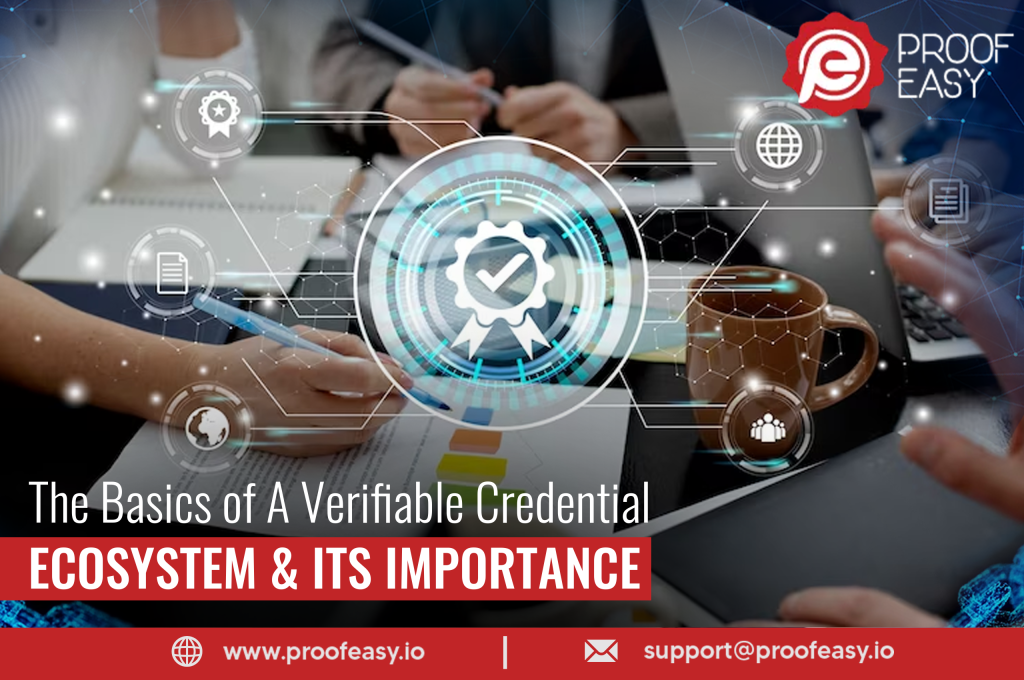
Data and identity are two things that are illicitly exploited in the digital world. Industries worldwide deal with concerns related to it. Authentication process takes a toll exponentially because authorities fail to validate credentials.
Whether it is physical or digital credential, cases of fake credentials are on the rise. According to the excerpts taken from “Degree Mills: The Billion Dollar Industry That Has Sold Over A Million Fake Diplomas” by Allen Ezell and John Bear, more than half of all people having a new PhD in the US have a fake degree.
This is why now more than ever, organizations need to embrace an effective way to verify credentials. The traditional systems dedicated for credential verification falls short in comparison to the number of cases emerging for fake, tampered and counterfeited credentials.
In this blog, we will be exploring all things essential about a verifiable credential ecosystem and its importance in today’s world.
Understanding Verifiable Credentials
Verifiable credentials (VCs) are basically tamper-proof credentials protected cryptographically and can be exchanged only through privacy-respecting parameters. They serve the purpose of digital proof of identity, qualifications, achievements, or any other attribute, issued by a trusted party or entity.
Now unlike traditional credentials, VCs are not just static documents; they are cryptographically signed digital artifacts. Therefore, making them tamper-evident and enabling easy verification of their authenticity.
Key Components That Make Verifiable Credentials
Verifiable Credentials consist of three essential components:
Issuer: The issuer is the entity or organization that generates and issues the Verifiable Credential to the holder. This entity can be a government agency, educational institution, employer, or any accredited organization responsible for verifying and asserting the subject’s information.
Holder: The holder is the individual or entity to whom the Verifiable Credential is issued and belongs to. It represents the user whose attributes or qualifications are being verified and shared.
Verifier: The verifier is the party that wants to verify the authenticity and validity of the Verifiable Credential. It can be any entity requiring proof of the subject’s attributes before granting access to services, privileges, or benefits.
The Standard Working Mechanism of Verifiable Credentials
The process of utilizing Verifiable Credentials involves the following steps:
#Step1 Credential Issuance
The issuer collects and verifies the holder’s information. Once the verification is complete, the issuer creates a Verifiable Credential by digitally signing it with their private key. This signature serves as a proof of the issuer’s authenticity and ensures the credential’s integrity.
#Step2 Credential Presentation
When the credential holder wants to prove their attributes or qualifications to a verifier, they present the Verifiable Credential. The holder gets to retain full control over their credentials and can choose which attributes to disclose to different verifiers.
#Step3 Credential Verification
The verifier receives the Verifiable Credential and uses the issuer’s public key to verify the digital signature. By doing so, the verifier can confirm the authenticity of the credential and the credential holder’s attributes without needing to contact the issuer directly.
The majority of credential verification services online are based on this mechanism. Additionally, they may use patented technology or systems to further fortify their platform.
The Perks of Using Verifiable Credentials
Enhanced Security: Verifiable Credentials use cryptographic techniques to ensure tamper-evident and tamper-resistant information sharing. This significantly reduces the risk of identity fraud and data breaches.
Privacy Preservation: Unlike traditional identity systems where personal information is often shared unnecessarily, VCs allow users to share only specific attributes required for a particular transaction, preserving their privacy.
Interoperability: VCs adhere to open standards like W3C’s Verifiable Credentials Data Model, ensuring that credentials issued by one organization can be verified and accepted by different verifiers, promoting seamless cross-platform and cross-border transactions.
User Empowerment: Individuals have control over their credentials, enabling them to manage and selectively share their data without relying on third-party services.
Reduced Friction: Verifiable Credentials streamline processes that require identity verification, eliminating the need for users to repeatedly submit the same information to different entities.
Minimized Paper Trails: Both paper and digital credentials can be secured in a verifiable credential ecosystem. With the paper-based version migrated to such a system, organizations have much less paperwork to issue and verifiers need to go through less hassle to authenticate.
Conclusion
Verifiable Credentials represent a game-changing advancement in digital identity management. It promises a boost in data security, privacy, and better user control over personal information.If you are considering taking a step towards this evolution then you might want to consider ProofEasy. It is a patented blockchain backed platform where users can secure and verify credentials.
